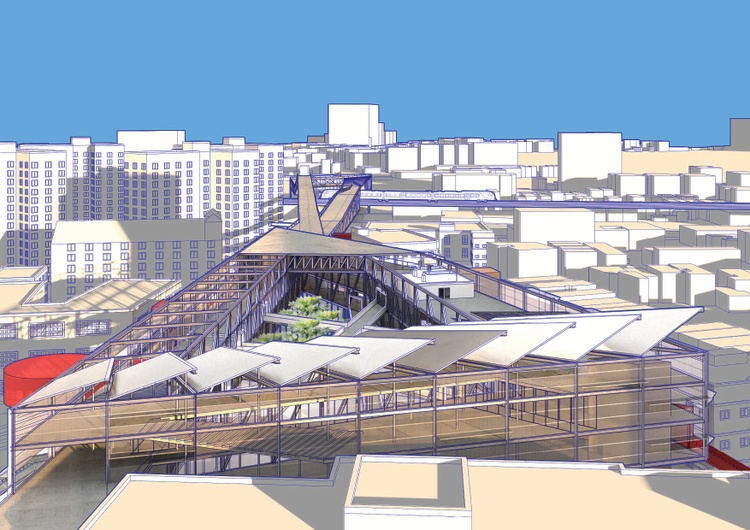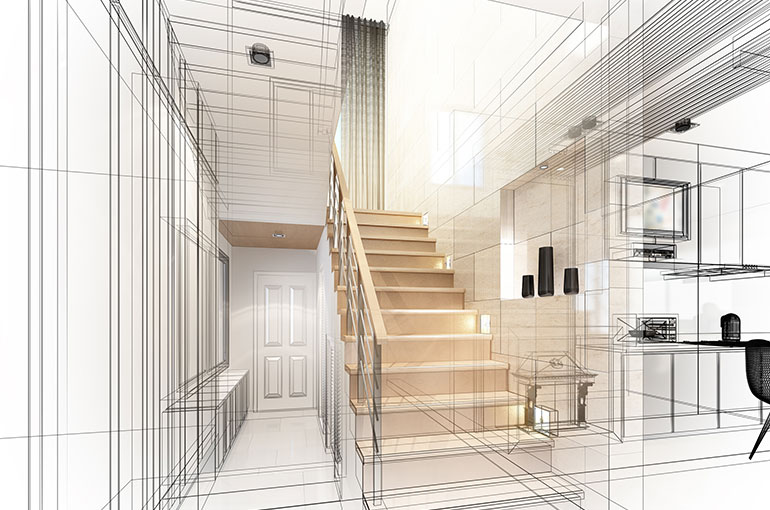Transforming Areas: The Vision of CDA Architects for Modern Living
Transforming Areas: The Vision of CDA Architects for Modern Living
Blog Article
Understanding the Collaborative Refine In Between Engineers and Engineers in Modern Construction Projects
The collective procedure in between architects and designers is vital in modern building and construction jobs, as it balances style intent with design feasibility. This collaboration not just influences the aesthetic and functional elements of a project yet additionally plays a crucial function in attending to sustainability challenges. By employing effective interaction approaches and leveraging innovative modern technologies, such as Structure Information Modeling (BIM), teams can work more cohesively. The ins and outs of this partnership frequently present unique challenges that can hinder development. Discovering these characteristics reveals insights that could considerably impact project results and general industry criteria.
The Importance of Collaboration
The collaborative synergy between architects and designers is essential for the effective understanding of any construction project. This partnership brings together distinctive competence and viewpoints, making it possible for the combination of cutting-edge layout with useful design remedies. By interacting, engineers and designers can ensure that a task not only satisfies aesthetic and practical requirements however additionally follows security, sustainability, and monetary restraints.
Collaboration cultivates a common vision, helping with the alignment of objectives and expectations from the start. This placement is crucial in resolving possible challenges and mitigating risks that might occur during the job lifecycle. Furthermore, a collaborative method allows for the efficient allocation of sources, optimizing both time and cost.
The relevance of partnership includes the repetitive process of design and construction, where responses from designers can educate building choices, causing even more viable and lasting styles. On the other hand, engineers can influence designers to assume artistically regarding how to attain architectural integrity without endangering creative intent. Eventually, the collaborative relationship in between designers and designers is not merely helpful; it is essential to the development of top notch, useful, and ingenious constructed environments that meet the demands of culture.
Interaction Strategies and Devices
Effective communication strategies and tools are vital for fostering cooperation between engineers and designers throughout the project lifecycle. Establishing clear networks of communication is necessary to guarantee that all employee are aligned with project goals, timelines, and responsibilities. Routine meetings, both in-person and online, give possibilities for stakeholders to review progress, address concerns, and make notified choices.
Utilizing project administration software program, such as BIM (Building Information Modeling) systems, boosts cooperation by allowing real-time sharing of style adjustments and technological specs. These tools help with openness, allowing architects and engineers to envision changes and analyze their effect on the overall task.

Shared Goals and Project Vision

Establishing shared goals entails open dialogue and a comprehensive understanding of each discipline's payments. Architects normally concentrate on style intent, spatial connections, and customer experience, while designers stress structural integrity, systems functionality, and conformity with policies (cda architects). When these perspectives are straightened, the outcome is a cohesive project that sticks to both creative desires and technical usefulness
In addition, a well-defined project vision cultivates accountability amongst team participants, urging each participant to take possession of their function in attaining the desired result. Normal check-ins and collaborative workshops can further strengthen this dedication, enabling for adjustments to be made as the task progresses. Eventually, a shared vision not just boosts synergy however also raises the quality of the final deliverable, causing effective task completion.
The Duty of Technology
Leveraging technology has come to be essential in boosting collaboration between architects and engineers. Building Details Modeling (BIM) stands out as a critical innovation, permitting both designers and engineers to produce in-depth 3D designs that envelop design intent and architectural honesty.
Additionally, cloud-based platforms make it possible for smooth partnership, allowing task stakeholders to gain access to and update job information from anywhere. This cultivates a culture of openness and accountability, as adjustments can be tracked and evaluated in real-time. Additionally, mobile applications more improve communication, giving on-site teams with immediate access to job specs and updates.
Arising modern technologies such as artificial intelligence and equipment knowing are additionally beginning to play a duty in predictive evaluation, aiding teams identify prospective concerns prior to they emerge. Eventually, the role of modern technology in architecture-engineering cooperation not just boosts operations performances but also enhances technology, causing more effective task outcomes. By embracing these technological innovations, architects and designers can make certain a more cohesive and efficient collective procedure throughout the building lifecycle.
Instance Studies in Successful Collaborations
Numerous situation researches show the profound impact of reliable partnerships between architects and engineers on task results. One notable instance is the cooperation on the High Line in New York City City, reference where landscape architects, engineers, and urban organizers collaborated to transform an abandoned rail line into a dynamic public park. This multidisciplinary approach not only boosted the aesthetic top quality yet also made certain structural safety and security and environmental sustainability.
Another exemplary instance is the layout and building and construction of the Sydney Concert Hall. The collaboration between engineer JÃ ¸ rn Utzon and architectural engineer Ove Arup exemplified cutting-edge problem-solving. Their cooperation enabled the iconic shell-like style while dealing with intricate engineering obstacles, inevitably resulting in a timeless building masterpiece.
The Burj Khalifa in Dubai additionally demonstrates the significance of collaborative efforts. cda architects. The integration of design and engineering knowledge allowed the project team to achieve unmatched heights while adhering to security policies and aesthetic vision
These instances emphasize the relevance of communication, trust, and shared resource goals. In today's complex construction environment, such collaborations are important to navigating challenges and providing jobs that fulfill both practical and visionary objectives.
Final Thought
Finally, the partnership in between engineers and designers is important for the success of modern-day building and construction projects. Efficient interaction strategies, a common task vision, and the assimilation of innovative technologies are critical components that facilitate this collaboration. By cultivating a society of responsibility and leveraging tools such as Building Information Modeling (BIM), groups can browse task intricacies, guaranteeing that aesthetic, functional, and sustainability purposes are attained. Eventually, this synergy results in innovative and effective task results.
Report this page